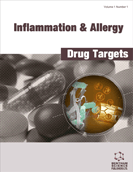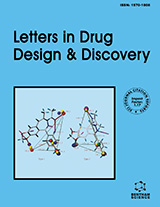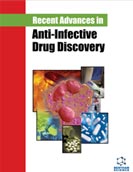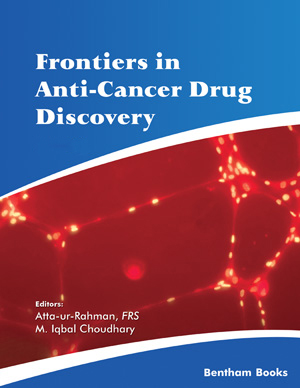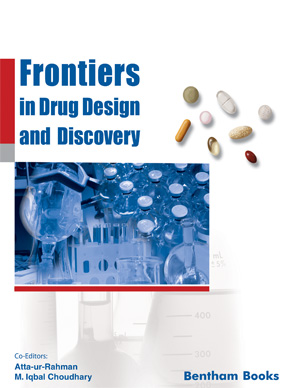Abstract
Idiopathic pulmonary fibrosis (IPF) is a chronic, progressive, irreversible, and usually fatal interstitial lung disease of unknown cause [1, 2]. The aetiology of IPF is unknown, although identified risk factors for IPF include cigarette smoking, environmental exposures, microbial agents, age, male gender and gastroesophageal reflux disease (GERD). Genetic factors may also play a role in the aetiology of IPF as familial cases of IPF are described in approximately 5% of patients with IPF [2]. Nothing has shown significant anti-fibrotic activity in IPF patients and due to this high unmet medical need, numerous therapeutics are currently under clinical investigation. In this review, we shall focus on recombinant protein based approaches for the treatment of IPF, with a particular focus on pathophysiology of lung fibrosis using the bleomycin mouse model.
Keywords: Bleomycin, epithelium, fibroblast, lung fibrosis, macrophage.
Inflammation & Allergy - Drug Targets (Discontinued)
Title:Recombinant Protein Based Therapeutics for IPF
Volume: 12 Issue: 2
Author(s): Joseph M. Parker, Michael S. Kramer and Lynne A. Murray
Affiliation:
Keywords: Bleomycin, epithelium, fibroblast, lung fibrosis, macrophage.
Abstract: Idiopathic pulmonary fibrosis (IPF) is a chronic, progressive, irreversible, and usually fatal interstitial lung disease of unknown cause [1, 2]. The aetiology of IPF is unknown, although identified risk factors for IPF include cigarette smoking, environmental exposures, microbial agents, age, male gender and gastroesophageal reflux disease (GERD). Genetic factors may also play a role in the aetiology of IPF as familial cases of IPF are described in approximately 5% of patients with IPF [2]. Nothing has shown significant anti-fibrotic activity in IPF patients and due to this high unmet medical need, numerous therapeutics are currently under clinical investigation. In this review, we shall focus on recombinant protein based approaches for the treatment of IPF, with a particular focus on pathophysiology of lung fibrosis using the bleomycin mouse model.
Export Options
About this article
Cite this article as:
Parker M. Joseph, Kramer S. Michael and Murray A. Lynne, Recombinant Protein Based Therapeutics for IPF, Inflammation & Allergy - Drug Targets (Discontinued) 2013; 12 (2) . https://dx.doi.org/10.2174/1871528111312020005
| DOI https://dx.doi.org/10.2174/1871528111312020005 |
Print ISSN 1871-5281 |
| Publisher Name Bentham Science Publisher |
Online ISSN 2212-4055 |
 16
16Related Articles
-
The Fabry Cardiomyopathy - Diagnostic Approach and Current Treatment
Current Pharmaceutical Design 3D Printing in Modern Cardiology
Current Pharmaceutical Design Non-invasive Atherosclerosis Imaging: Use to Assess Response to Novel or Combination Lipid Therapies
Current Drug Targets - Cardiovascular & Hematological Disorders Oxidative-Nitrosative Stress as a Contributing Factor to Cardiovascular Disease in Subjects with Diabetes
Current Vascular Pharmacology Genetic Studies of Type 2 Diabetes in South Asians: A Systematic Overview
Current Diabetes Reviews Antioxidative Activity, Polyphenolic Content and Anti-Glycation Effect of Some Thai Medicinal Plants Traditionally Used in Diabetic Patients
Medicinal Chemistry Nanotechnology: A Novel Approach for Drug Development in Health Care System
Current Nanomaterials Role of Asymmetric Dimethylarginine (ADMA) in Diabetic Vascular Complications
Current Pharmaceutical Design Physiological Significance and Therapeutic Potential of Adrenomedullin in Pulmonary Hypertension
Cardiovascular & Hematological Disorders-Drug Targets Implications of the Obesity Epidemic for Statin Therapy: Shifting Cholesterol Metabolism to a High Synthesis and Low Dietary Absorption State
Endocrine, Metabolic & Immune Disorders - Drug Targets Vitamin D and Infectious Diseases
Endocrine, Metabolic & Immune Disorders - Drug Targets Conditional Cardiac Overexpression of S100A6 Attenuates Myocyte Hypertrophy and Apoptosis Following Myocardial Infarction
Current Pharmaceutical Design Statistically Designed Extraction of Herbs Using Ultrasound Waves: A Review
Current Pharmaceutical Design Anti-T. cruzi Agents: Our Experience in the Evaluation of More than Five Hundred Compounds
Mini-Reviews in Medicinal Chemistry The Potential Roles of Gamma-Glutamyltransferase Activity in the Progression of Atherosclerosis and Cardiovascular Diseases
Vascular Disease Prevention (Discontinued) Thromboxane Synthase Inhibitors and Thromboxane A2 Receptor Antagonists: A Quantitative Structure Activity Relationships (QSARs) Analysis
Current Medicinal Chemistry Skeletal Myoblasts for Heart Regeneration and Repair: State of the Art and Perspectives on the Mechanisms for Functional Cardiac Benefits
Current Pharmaceutical Design The Effects of Nanoencapsulated Curcumin-Fe3O4 on Proliferation and hTERT Gene Expression in Lung Cancer Cells
Anti-Cancer Agents in Medicinal Chemistry Smoking and Atherosclerosis: Mechanisms of Disease and New Therapeutic Approaches
Current Medicinal Chemistry Cell-free Nucleic Acids as a Non-Invasive Route for Investigating Atherosclerosis
Current Pharmaceutical Design


